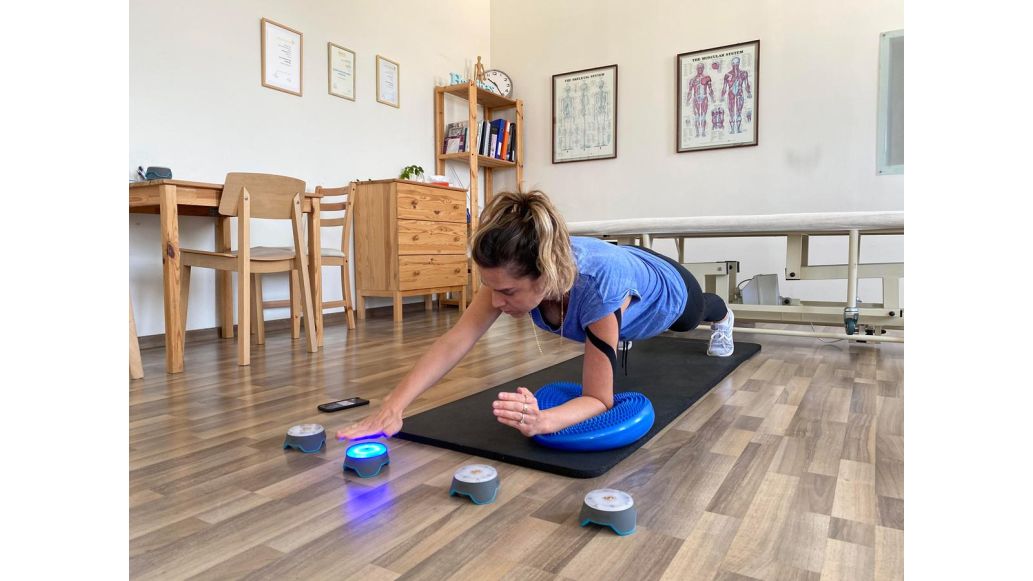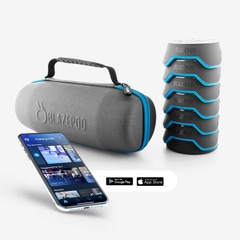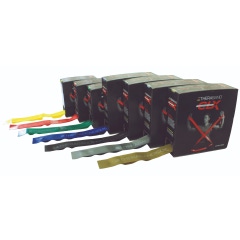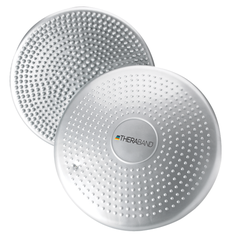In recent years, the concept of “gamification” has been making its way into the clinical space. Gamification is “the use of game design elements in non-game contexts,”1 or making something that isn’t a game feel like one. The goal of bringing game-like elements into rehabilitation is to engage patients and to motivate them to continue their rehab exercises outside of the clinic.
But is gamification effective in the clinic? And how can you integrate those elements into your practice?
Key Takeaways
- Gamification is a great way to keep patients engaged and motivated during physical therapy
- Use something as simple as a deck of cards to bring a game-like element to therapy
- Game elements can include goals, feedback, and multi-person activities
Top Products in This Article
Table of Contents
The Research
So, does gamification work?
According to most research, the answer is yes—there haven’t been any instances of negative results, and in some studies, gamified exercises worked better than conventional therapy. For example, one study involving patients with subacromial impingement syndrome (SAIS) found patients who had Wii activities as part of their rehab regimen showed significant improvement in their shoulder mobility compared to patients who underwent conventional therapy.2
In terms of using game-like equipment, one study found IT convergence exercise equipment is a feasible supplementary tool for physical therapy among older patients.3 Another found Sony PlayStation 2’s EyeToy game to be a feasible clinical tool, helping improve patients’ scores in the Dynamic Gait Index, Fugl-Meyer Assessment, Berg Balance Scale, and Motor Activity Log.4
Research also indicates gamification can improve patient compliance. For example, one pilot study found compliance was higher in patients who had Wii games integrated into their rehab than patients who had conventional therapy.5 The reason for this elevated engagement is quite simple: patients are motivated to engage in exercises when they’re having fun.1
Gamification in Your Clinic
There are plenty of ways to “gamify” exercises with your patients, and not all of them need to be high-tech. Keep reading to learn about some simple ways you can incorporate gamification into your practice, plus discover some products that have built-in game-like elements.
Three Simple Gamified Therapy Exercises
Introducing gamification into physical therapy doesn’t have to be complicated – sometimes, it just requires a little creativity. Here are three ways to transform simple everyday games into a fun rehabilitation game.
1. Deck of Cards Game
While the Deck of Cards Game can be used as a fitness tool, it can also be used as a gamification technique in therapy. Simply assign an exercise or movement to each suite in the deck of cards, with the number on the card indicating the number of times your patient repeats the movement. Shuffle the cards and have your patient pick one out of the deck, performing each exercise as indicated by the suite and number on the card. Break up the session by splitting the deck into smaller piles.
2. Roll the Dice Workout
The Roll the Dice Workout is like the Deck of Cards Game—all you need is a pair of dice. Write down exercises for the numbers two through 12, and have your patient roll the dice twice. The sum of the numbers on the first roll determines the exercise, and the sum of the numbers on the second roll determines the number of reps. As your patient progresses, try adding a CLX resistance band to increase difficulty.
3. Flip a Coin Workout
In the Flip a Coin Workout, determine the number of rounds suitable for your patient. For each round, pick two exercises, designating one exercise to heads and the other to tails. Have your patient flip the coin once per round to determine the exercise they perform. Incorporate a resistance band or stability disc to increase difficulty as your patient improves!
Gamification Equipment for Your Clinic
Certain products are designed with built-in game-like elements that can help enhance your patient’s rehab experience. Keep reading to learn about three products that can help keep your patients engaged and motivated!
1. BlazePod
BlazePod is a new interactive reaction training system that uses light and visual cues to enhance rehabilitation exercises. Each individual Pod can light up in different colors, speeds, sequences, and frequencies, challenging both the mind and body. Customize activities or choose from a list of pre-programmed sequences – simply connect with the BlazePod app to get started!
BlazePod makes almost any activity like a game by using visual cues and providing feedback. The app allows you to track progress, save activities, and even create multi-player activities.

The Telesis Software Program is a computerized program that can be integrated into biofeedback systems like Pathway MR 20 and MR 25 EMG units. While this device sounds like a standard clinical tool, it can also be used in gamification. By utilizing the visual and auditory feedback it provides, patients can stay more engaged in their therapy sessions.
3. Matrix Lifestyle Touch Elliptical

Connect with content that will keep your patients moving with the Matrix Lifestyle Touch Elliptical. This machine comes with an app-based interface that includes many interactive and unique features. For example, the Virtual Active feature allows patients to view footage of real-life outdoor terrain that matches their pace, resistance, and incline as they exercise. Its Landmarks feature makes stair-climbing fun by matching the number of stairs a patient climbs to a man-made wonder of the world.
4.Cyber Cycle

For elderly patients, consider adding the CyberCycle to their rehabilitation regimen. Not only has the CyberCycle been proven to significantly delay the onset and progression of mental decline, it also has built-in gamification features. This recumbent bike helps motivate and invigorate riders and create sustained fun with leaderboards, virtual cycling paths, and even cycling games!
Recap
While gamification is relatively new in the clinical space, it’s been showing promising results in patients. By incorporating more game-like elements into your therapy, you can keep your patients more engaged and encourage them to continue their therapy at home.
Additional Resources
11 Exercise Games & Activities to Make Fitness Fun
Exercise More Fun with a Deck of Cards Workout
Get Moving with this Roll of the Dice Workout
Stay Fit Indoors with the Flip a Coin Workout
References
- Johnson, D., Deterding, S., Kuhn, K. A., Staneva, A., Stoyanov, S., & Hides, L. (2016). Gamification for health and wellbeing: A systematic review of the literature. Internet interventions, 6, 89–106. https://doi.org/10.1016/j.invent.2016.10.002
- Pekyavas, N. O., & Ergun, N. (2017). Comparison of virtual reality exergaming and home exercise programs in patients with subacromial impingement syndrome and scapular dyskinesis: Short term effect. Acta orthopaedica et traumatologica turcica, 51(3), 238–242. https://doi.org/10.1016/j.aott.2017.03.008
- M.J. Shin, C. Eun Gyeom, L. Eun Lee, C. Da Som, J. Myung Hun, K. Myoung-Hwan. The effect of IT convergence gamification training in community-dwelling older people: Pilot randomized controlled trial (RCT) study. Annals of Physical and Rehabilitation Medicine, Volume 61, Supplement, 2018, Page e341, ISSN 1877-0657, https://doi.org/10.1016/j.rehab.2018.05.797.
- Loria, K. (2014). Game on: physical therapists are turning to gamification for help in treating their patients. Physical Therapy, 94(8), S16+. https://link.gale.com/apps/doc/A378680333/SCIC?u=lom_cornerstc&sid=summon&xid=52b1f6cf.
- Rizzo, J. R., Thai, P., Li, E. J., Tung, T., Hudson, T. E., Herrera, J., & Raghavan, P. (2017). Structured Wii protocol for rehabilitation of shoulder impingement syndrome: A pilot study. Annals of physical and rehabilitation medicine, 60(6), 363–370. https://doi.org/10.1016/j.rehab.2016.10.004
- Judith E Deutsch, Megan Borbely, Jenny Filler, Karen Huhn, Phyllis Guarrera-Bowlby, Use of a Low-Cost, Commercially Available Gaming Console (Wii) for Rehabilitation of an Adolescent With Cerebral Palsy, Physical Therapy, Volume 88, Issue 10, 1 October 2008, Pages 1196–1207, https://doi.org/10.2522/ptj.20080062
Medical Disclaimer: The information provided on this site, including text, graphics, images, and other material are for informational purposes only and are not intended to substitute for professional medical advice, diagnosis, or treatment. Always seek the advice of your physician or other healthcare professional with any questions or concerns you may have regarding your condition.








 France
France Australia
Australia













